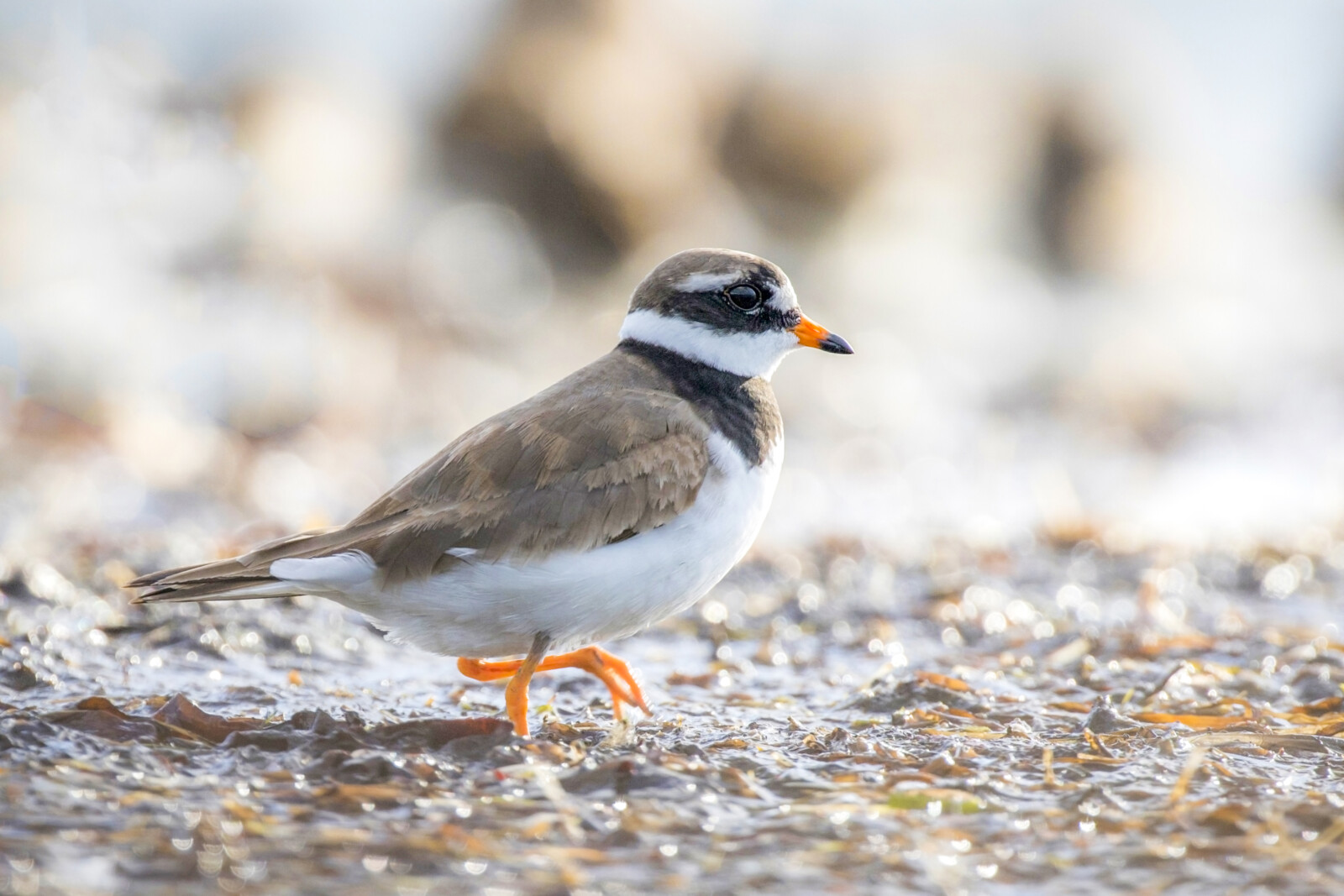Ringed plover
- Ringed plover, Haversvi
- https://linnuriik.ee/wp-content/uploads/2021/09/Liivatull-Kauro-Kuik-1024x683.jpg
- Keemu linnud
- https://linnuriik.ee/wp-content/uploads/2021/09/14_Liivatull_080830aa135052_Haversvi.mp3
Ringed plover. Photo: Kauro Kuik
Introduction
Latin Charadrius hiaticula L.
Estonian Liivatüll
Also known as: common ringed plover
Status in Estonia
Breeding and migratory bird.
Description
The adult bird’s legs and beak are orange and the distinguishing wing stripe is white. The female bird’s black head and breast band are frequently tinged with brown and less prominent and visible than the male’s. In the winter, the legs are often a slightly duller orange and the beak is sometimes totally black. In comparison to the small ringed plover, it is larger with a bigger chest, slightly shorter tertials and a greater overhang of primaries. The juvenile’s dark pattern on the head and breast is brown rather than black, the chest streak is narrower or does not meet in the middle. The top side has a fine scaly pattern, the beak is entirely dark or with a little yellow at the base and the legs are dull orange to yellowish.
Size
Body length 17–19.5 cm, wingspan 35–41 cm, body mass 50–65 g.
Similar species
Little ringed plover.
Distribution
The ringed plover is an Arctic and north temperate species found from the Baffin Islands and Greenland through Northern Eurasia’s tundras to the Chukotka Peninsula in Northeastern Siberia. As an Arctic tundra species, it is also found in Northwest and Northern Europe as well as in some rural areas of European countries. Its wintering areas are found in Europe and Northwest Africa. It is a typical coastal bird in Estonia.
Population
Ringed plover populations in Estonia have been steadily declining for at least the last 50 years. Estonia has 1000–2000 breeding pairs.
Occurrence in Estonia
The first ringed plovers arrive by the end of March. Northern populations migrate throughout April and May. Autumn migration is most active between late August and mid-September and concludes in October.
Diet
Ringed plovers feed primarily on invertebrates, particularly various aquatic molluscs.
Habitat
As a common coastal bird in Estonia, the ringed plover nests predominantly on islands and along the sea coast, where it favours sand and shingle beaches with sparse and low vegetation.
Nesting
Ringed plovers build their nests in hollows dug into the ground, which they line with small stones of the same size, water snail shells or even a few straws in grassy areas. In beach meadows, it is not uncommon to see a ringed plover’s nest in dung. Between the end of May and the middle of June, the female bird lays four whitish-grey eggs with black spots and lines in the nest, which are incubated by both adult birds. The chicks hatch in mid-June and can fly in July. The brood remains together for a while until separating at the start of the autumn migration, when the birds gather in large flocks and depart.
Conservation status and protection
The ringed plover belongs to the protected species of category III. Enemies are primarily large gulls and small predators.
Distribution and population in Lääne County
The ringed plover is a very common migratory bird and a common breeding bird along the coast of Lääne County. Matsalu National Park’s low-grass beach meadows provide an important nesting habitat for these birds. Ringed plovers can be found in a variety of locations within Matsalu National Park between March and October. The observation towers at Keemu and Haeska as well as the parking area of the Põgari-Sassi bus stop provide good viewing opportunities. Ringed plovers are most commonly observed at Põgari-Sassi beach meadow and Riguldi Beach in Noarootsi during their migration.
